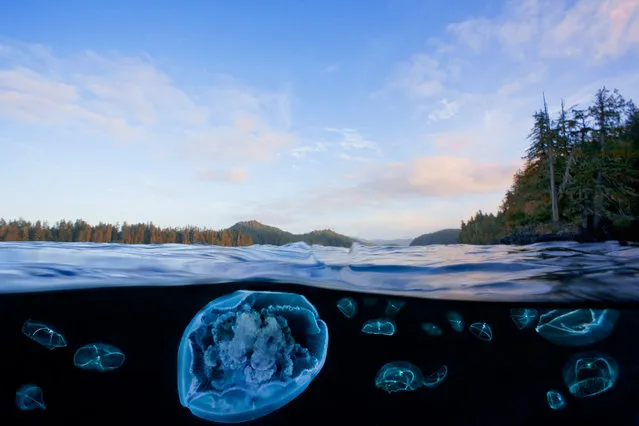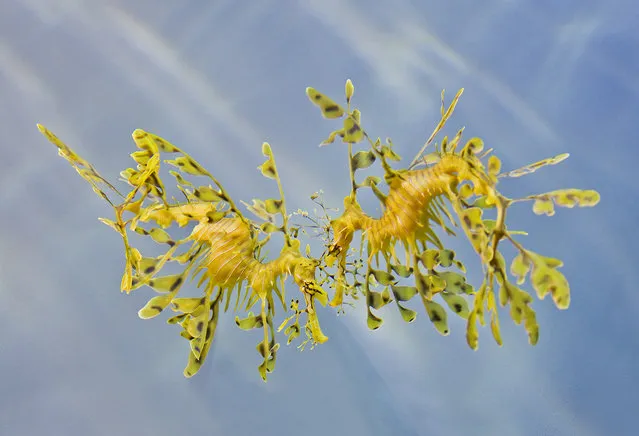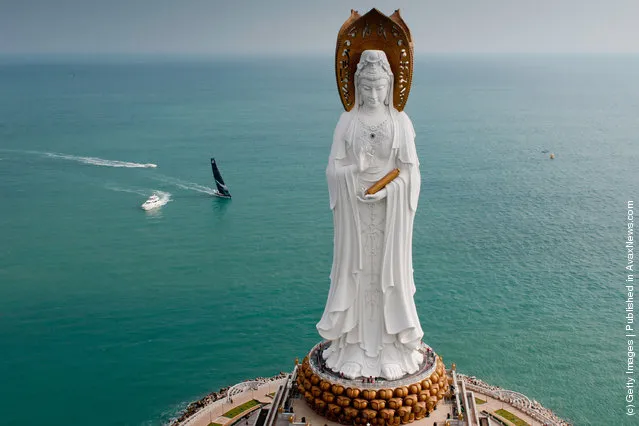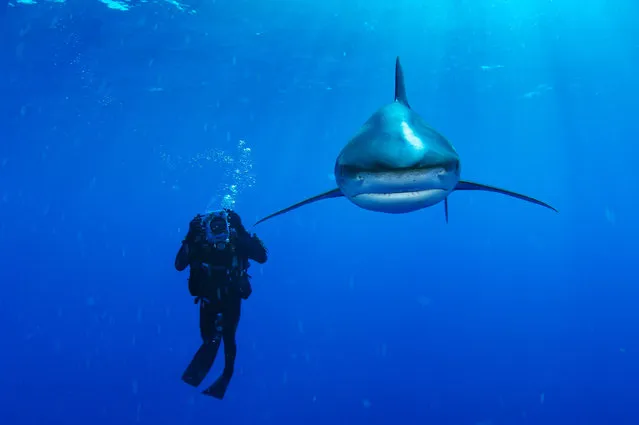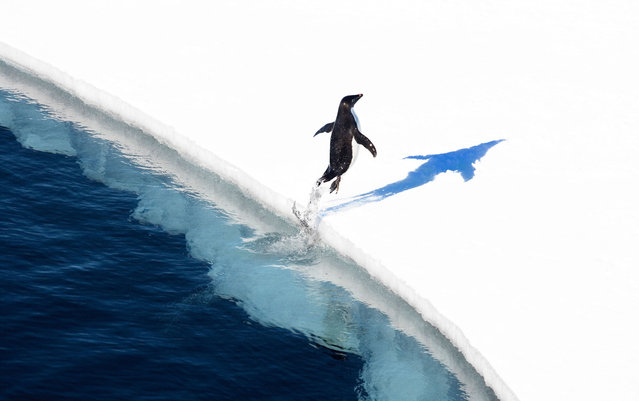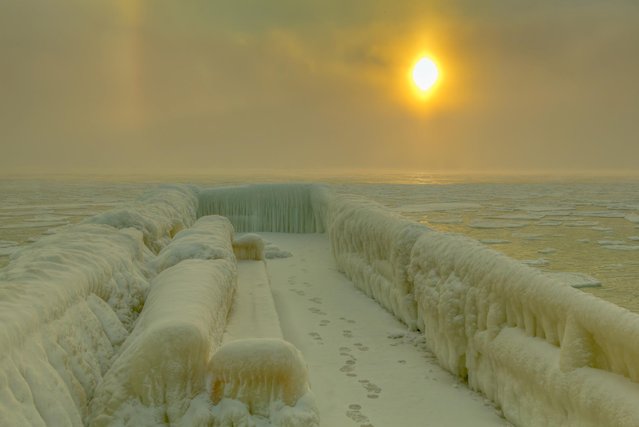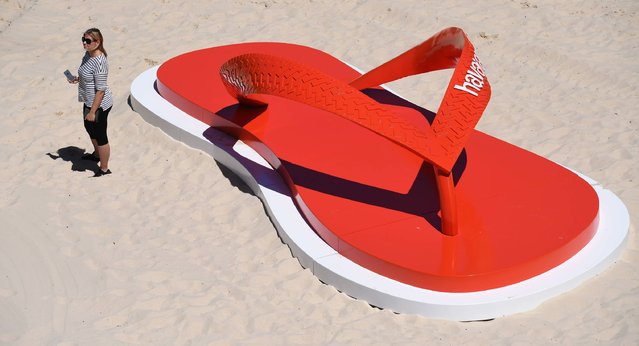
A woman stands next to a giant jandal on Tamarama Beach as giant sculptures are installed ahead of the “Sculpture by the Sea” exhibition in Sydney on October 19, 2016. Celebrating it's 20th anniversary, Sculpture by the Sea is the world's largest annual, free-to-the-public, outdoor sculpture exhibition. (Photo by William West/AFP Photo)
21 Oct 2016 12:42:00,post received
0 comments

